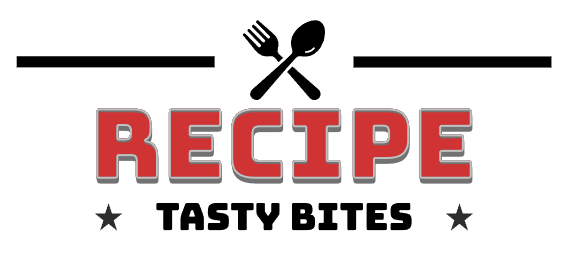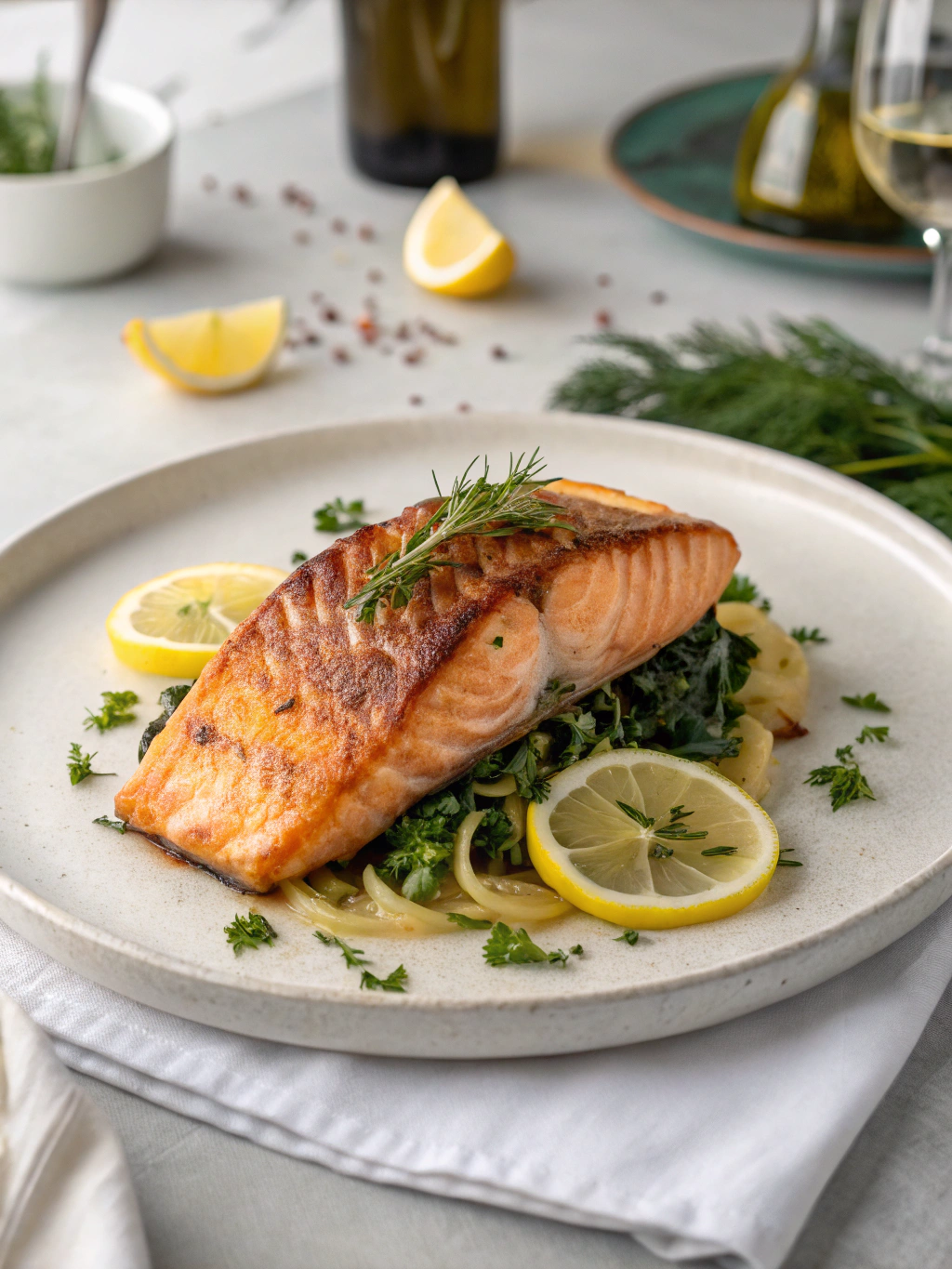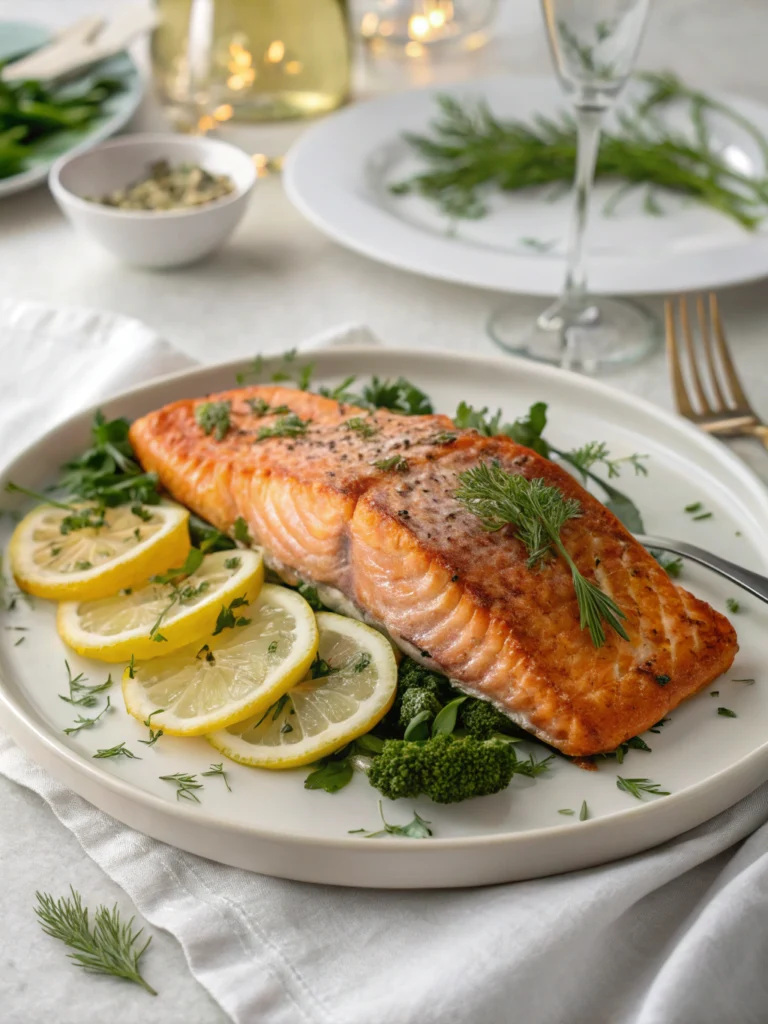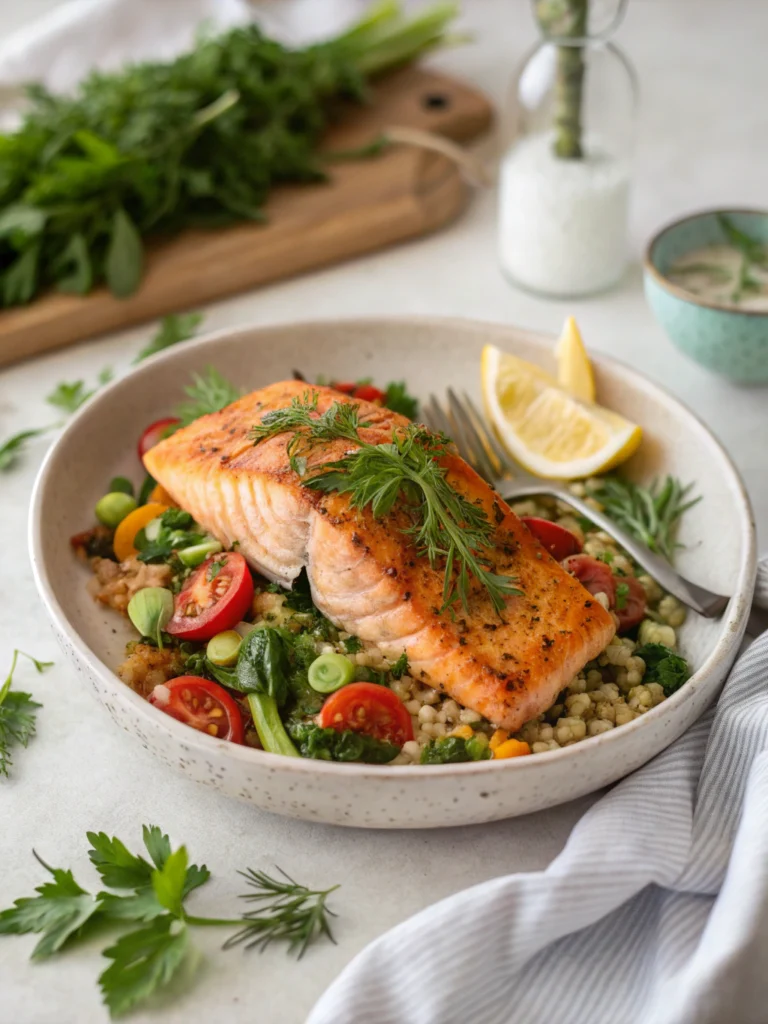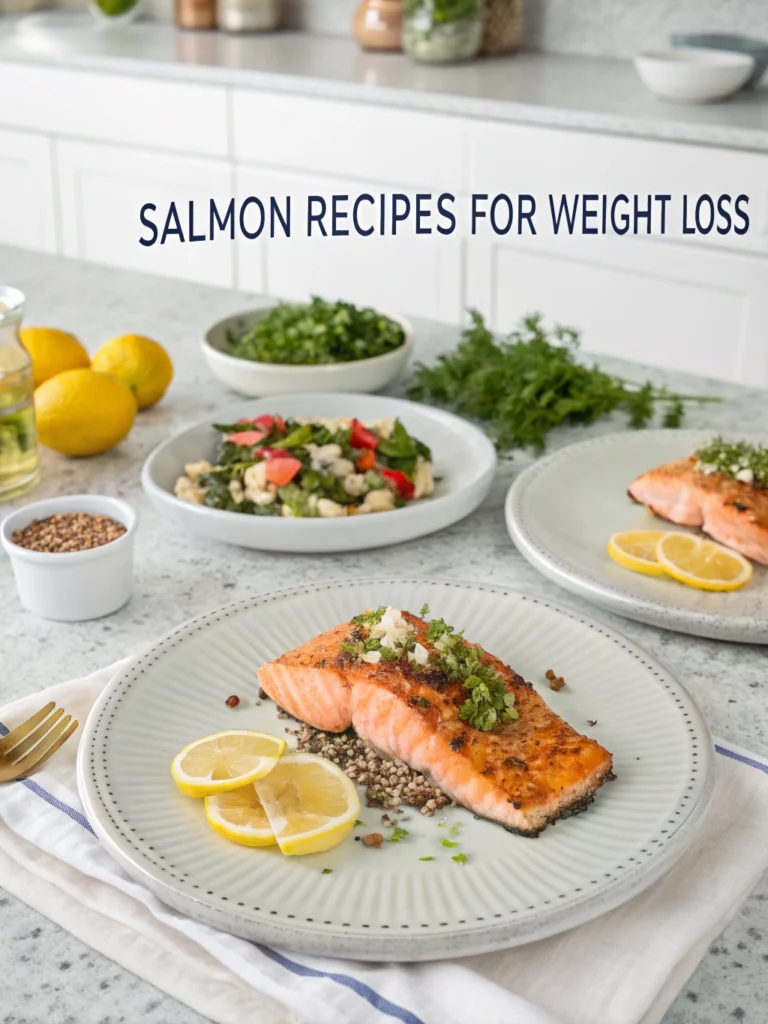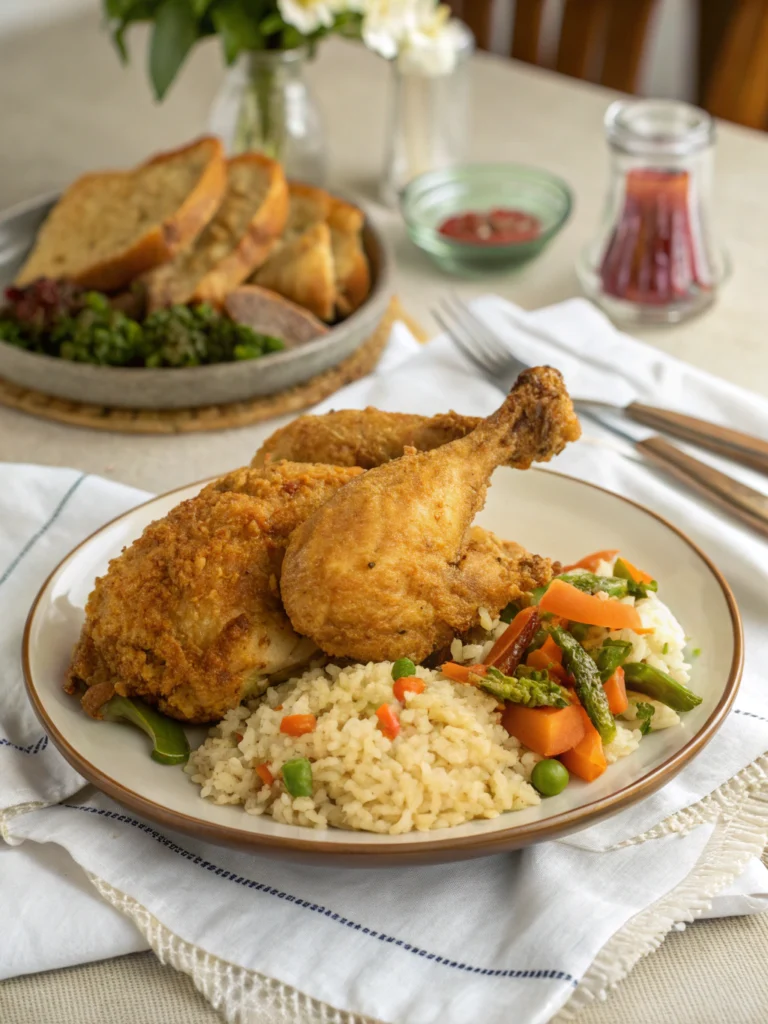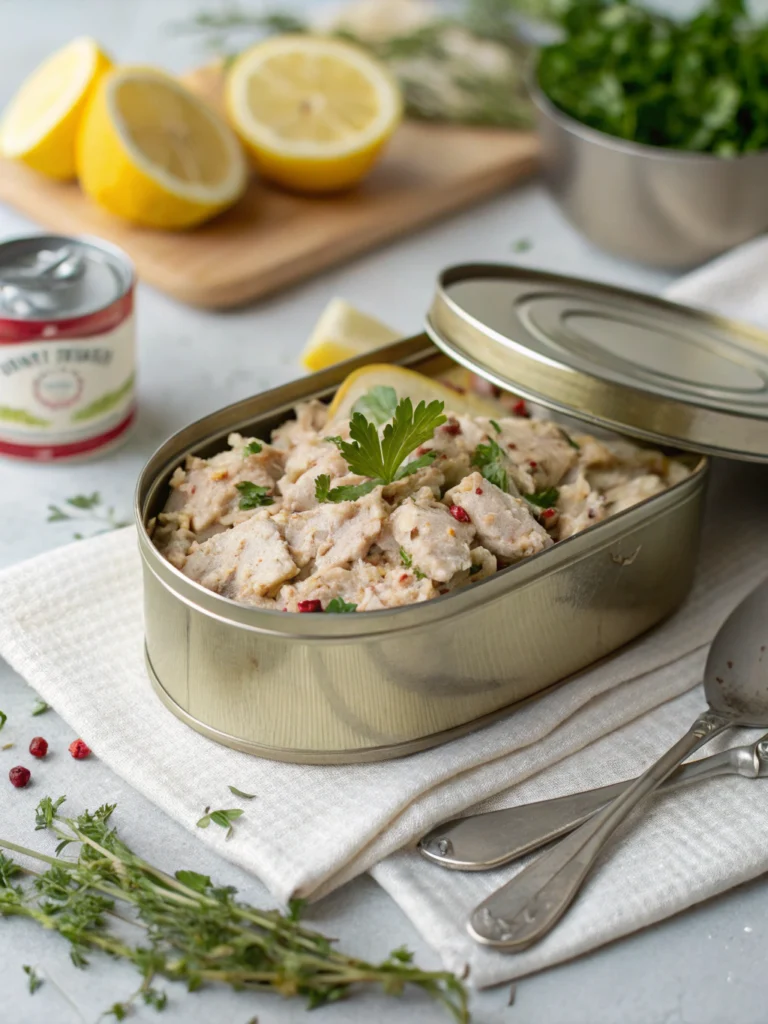Pan-seared salmon recipes: 6 Easy Ways to Cook Perfect Salmon
Table of Contents
Introduction
Are you tired of the same old salmon recipes? Discover the secrets to cooking mouthwatering pan-seared salmon recipes that will have your family and friends raving. With these 6 easy methods, you’ll unlock the full flavor potential of this nutritious and versatile fish.
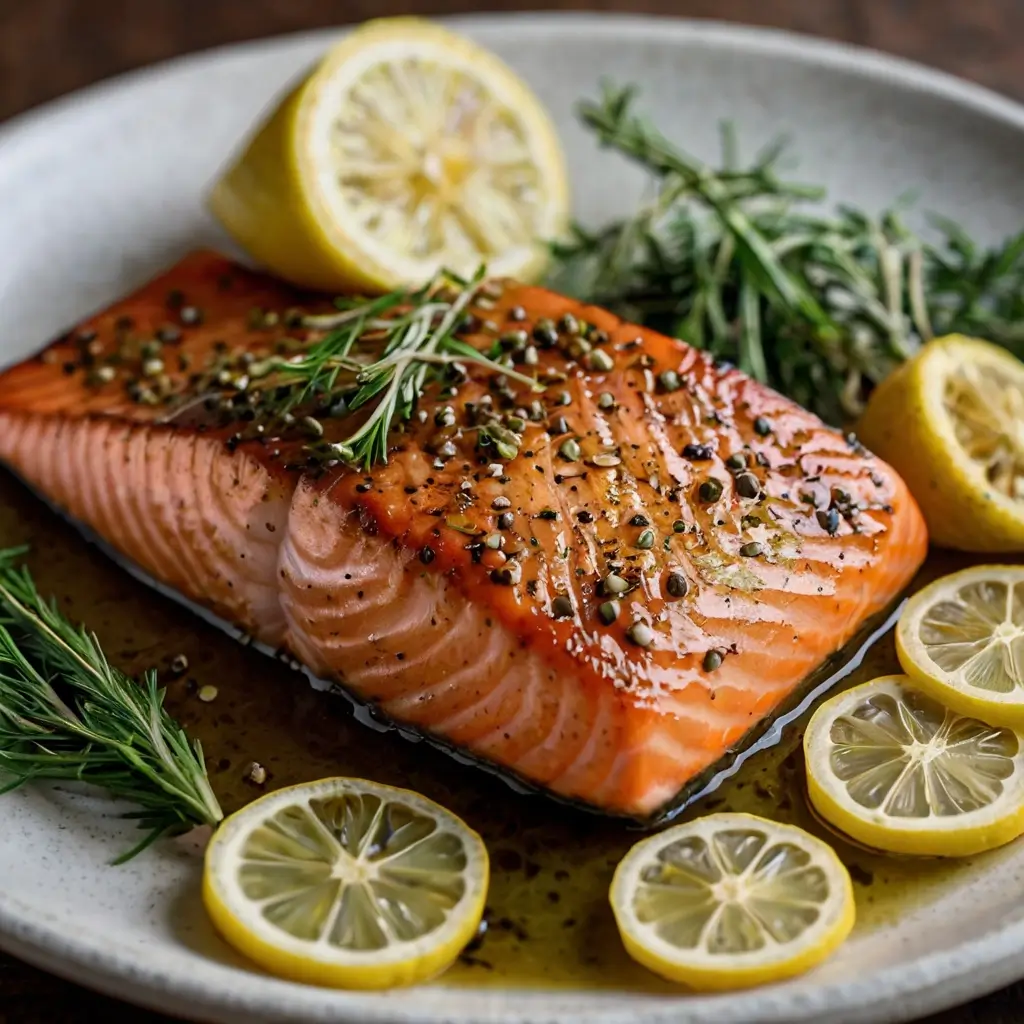
Ingredients List
Preparing the perfect pan-seared salmon starts with high-quality, fresh ingredients. Here’s what you’ll need:
- 4 salmon fillets (about 6 oz each)
- 1 tbsp olive oil
- 1 tsp salt
- 1/2 tsp black pepper
- Optional: lemon wedges, dill, or other fresh herbs for garnish
For the marinade (if using):
- 2 tbsp soy sauce
- 1 tbsp honey
- 1 tsp grated ginger
- 1 clove garlic, minced
Timing
- Total time : 20 minutes
- Prep time : 5 minutes
- Cook time : 15 minutes
Step-by-Step Instructions
Prepare the Salmon
- Pat the salmon fillets dry with paper towels and season both sides with salt and pepper.
- If using a marinade, combine the soy sauce, honey, ginger, and garlic in a shallow dish. Add the salmon fillets and let marinate for 30 minutes to 1 hour in the refrigerator.
Heat the Pan
- Heat a large skillet or cast-iron pan over medium-high heat. Add the olive oil and swirl to coat the bottom of the pan.
Sear the Salmon
- Carefully place the salmon fillets, skin-side down, in the hot pan. Cook for 4-5 minutes, or until the skin is crispy and golden brown.
Flip and Finish Cooking
- Flip the salmon fillets and cook for an additional 3-4 minutes, or until the salmon is cooked through and flakes easily with a fork.
Rest the Salmon
- Transfer the pan-seared salmon to a plate and let it rest for 5 minutes. This allows the juices to redistribute, resulting in a moist and tender texture.
Serve and Enjoy
- Serve the pan-seared salmon warm, garnished with lemon wedges, dill, or other fresh herbs of your choice.
Nutritional Information
Per serving (1 salmon fillet):
- Calories : 300
- Total Fat : 18g
- Saturated Fat : 3g
- Cholesterol : 100mg
- Sodium : 600mg
- Total Carbohydrates : 2g
- Protein : 30g
Salmon is an excellent source of omega-3 fatty acids, high-quality protein, and essential vitamins and minerals like vitamin B12, vitamin D, and selenium.
Healthier Alternatives for the Recipe
For a lighter option, you can swap the olive oil for a non-stick cooking spray or a small amount of avocado oil. If you’re looking to reduce sodium, use a low-sodium soy sauce or tamari in the marinade.
Serving Suggestions
Pair the pan-seared salmon with roasted vegetables, a fresh salad, or a side of quinoa or brown rice for a complete and nourishing meal. Drizzle the salmon with a flavorful sauce, such as a lemon-dill yogurt sauce or a honey-mustard glaze, to elevate the dish.
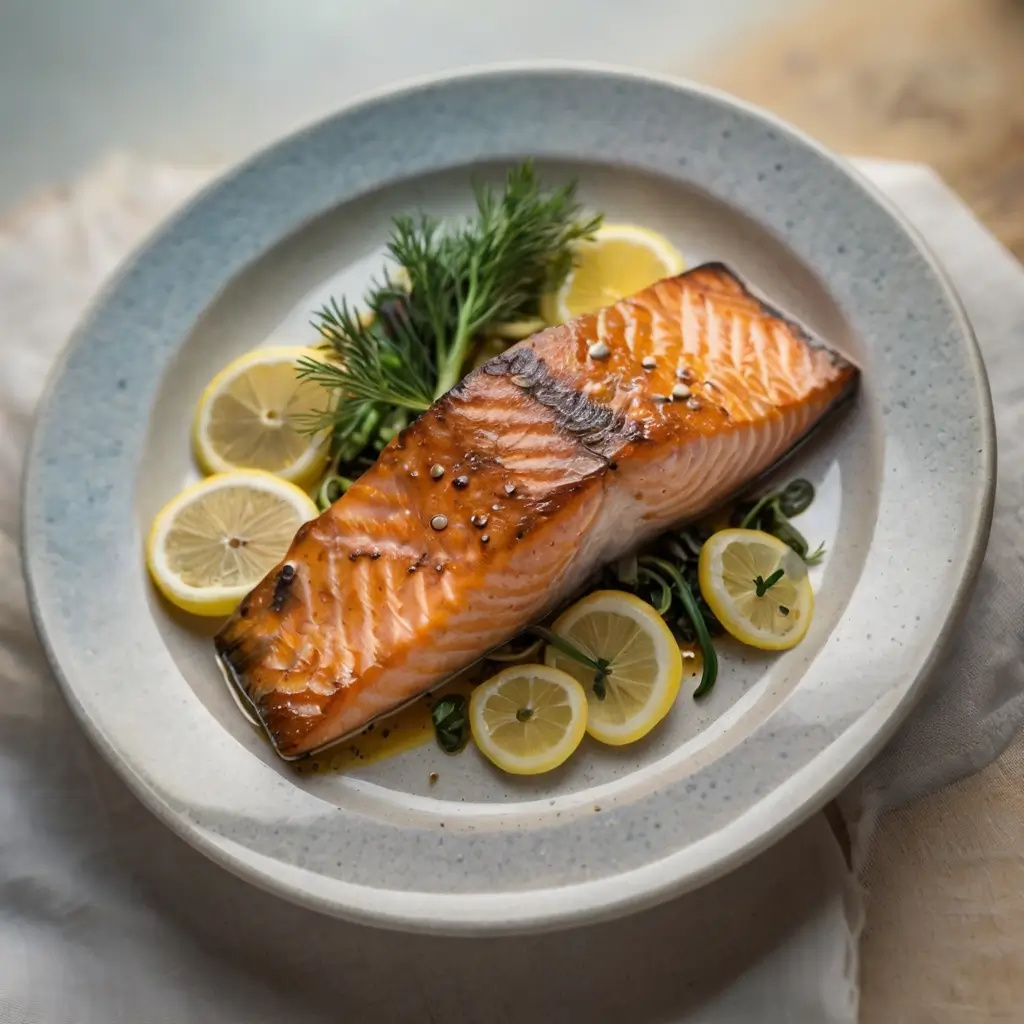
Common Mistakes to Avoid
- Overcrowding the pan: Be sure to leave enough space between the salmon fillets to ensure proper searing and even cooking.
- Overcooking the salmon: Keep a close eye on the salmon to avoid drying it out. The fish should be cooked until it’s just opaque in the center.
- Skipping the resting period: Allow the salmon to rest for 5 minutes before serving to retain its moisture and flavor.
Storing Tips for the Recipe
Cooked pan-seared salmon can be stored in an airtight container in the refrigerator for up to 3 days. For longer-term storage, the salmon can be frozen for up to 3 months. When ready to serve, thaw the salmon in the refrigerator overnight and reheat gently in a skillet or oven.
Conclusion
Mastering the art of pan-seared salmon recipes is a game-changer in the kitchen. With these 6 easy methods, you can consistently cook perfectly tender and flavorful salmon that will impress your family and friends. Give these recipes a try and let us know which one becomes your new favorite!
FAQs
Q: Can I use frozen salmon for this recipe?
A: Yes, you can use frozen salmon fillets. Just be sure to thaw them completely before cooking, and pat them dry with paper towels to ensure proper searing.
Q: Is it necessary to marinate the salmon before cooking?
A: Marinating the salmon is optional but can add an extra layer of flavor. If you choose to marinate, be sure to do so for no more than 1 hour to avoid the salmon becoming overly salty or mushy.
Q: Can I use a different type of fish instead of salmon?
A: Absolutely! These pan-searing techniques can be applied to other types of fish, such as halibut, cod, or snapper. Adjust the cooking time as needed based on the thickness of the fish.
Q: How can I tell when the salmon is cooked through?
A: The salmon is cooked through when it flakes easily with a fork and the center is opaque. You can also use a meat thermometer to ensure the internal temperature reaches 145°F (63°C).
Your Feedback Helps Us Grow!
There are no reviews yet. Be the first one to write one.
